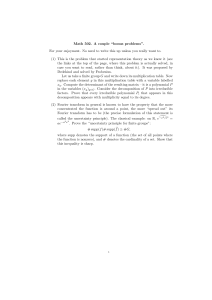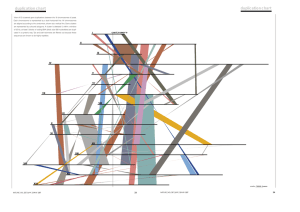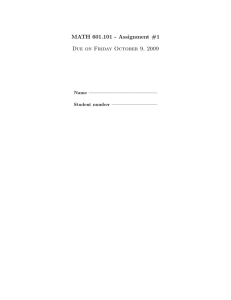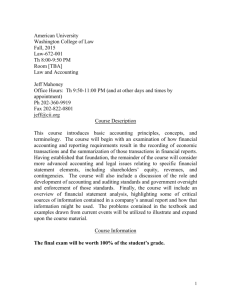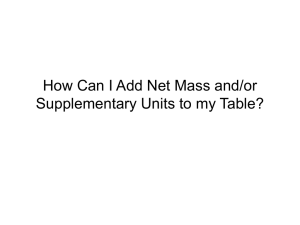Rule Mining and the Apriori Algorithm
advertisement
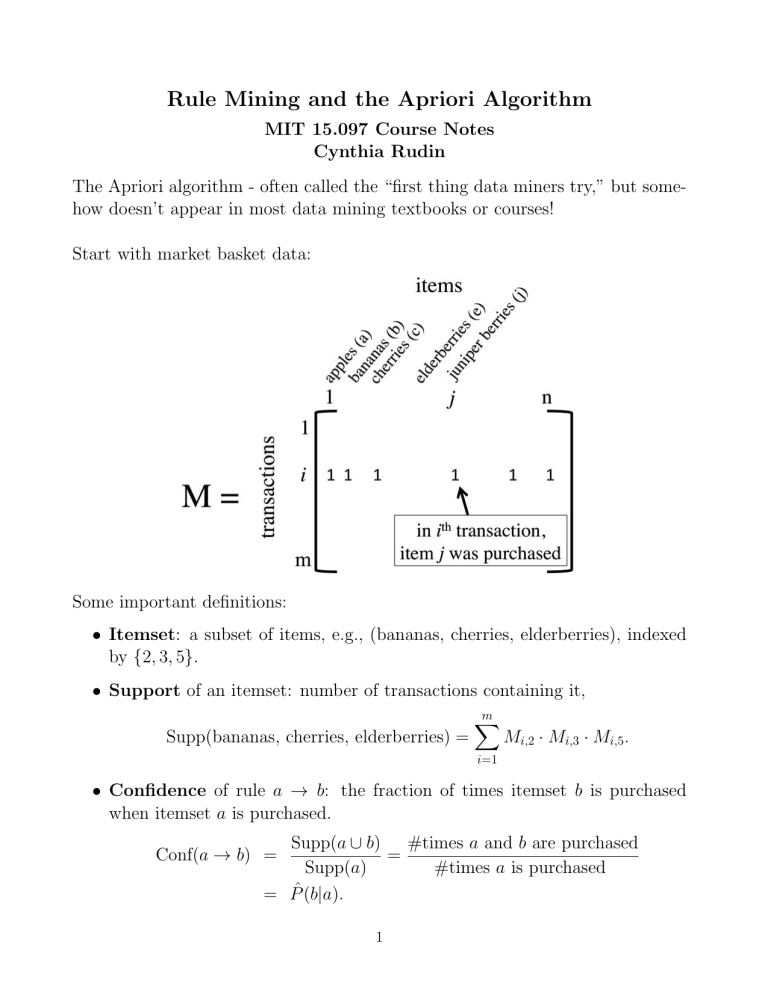
Rule Mining and the Apriori Algorithm
MIT 15.097 Course Notes
Cynthia Rudin
The Apriori algorithm - often called the “first thing data miners try,” but somehow doesn’t appear in most data mining textbooks or courses!
Start with market basket data:
Some important definitions:
• Itemset: a subset of items, e.g., (bananas, cherries, elderberries), indexed
by {2, 3, 5}.
• Support of an itemset: number of transactions containing it,
Supp(bananas, cherries, elderberries) =
m
X
Mi,2 · Mi,3 · Mi,5 .
i=1
• Confidence of rule a → b: the fraction of times itemset b is purchased
when itemset a is purchased.
Supp(a ∪ b) #times a and b are purchased
=
Supp(a)
#times a is purchased
= Pˆ (b|a).
Conf(a → b) =
1
We want to find all strong rules. These are rules a → b such that:
Supp(a ∪ b) ≥ θ, and Conf(a → b) ≥ minconf.
Here θ is called the minimum support threshold.
The support has a monotonicity property called downward closure:
If Supp(a ∪ b) ≥ θ then Supp(a) ≥ θ and Supp(b) ≥ θ.
That is, if a ∪ b is a frequent item set, then so are a and b.
Supp(a ∪ b) = #times a and b are purchased
≤ #times a is purchased = Supp(a).
Apriori finds all frequent itemsets (a such that Supp(a) ≥ θ). We can use
Apriori’s result to get all strong rules a → b as follows:
• For each frequent itemset `:
– Find all nonempty subsets of `
– For each subset a, output a → {` \ a} whenever
Supp(`)
≥ minconf.
Supp(a)
Now for Apriori. Use the downward closure property: generate all k-itemsets
(itemsets of size k) from (k − 1)-itemsets. It’s a breadth-first-search.
2
2-itemsets: {a,b
}
supp:
7
{a,c}
25
3-itemsets: {a,c,d}
supp:
15
d
45
{a,d}
15
{a,c,e}
22
s
grap
e
c
30
ries
b
20
rb e r
cher
ries
a
25
elde
ban
ana
s
1-itemsets:
supp:
app
les
Example:
θ = 10
e
29
/f
5
{a,e} ...
23
g
17
{e,g}
3
{b,d,g} ...
15
4-itemsets: {a,c,d,e}
supp:
12
Apriori Algorithm:
Input: Matrix M
L1 ={frequent 1-itemsets; i such that Supp(i) ≥ θ}.
For k = 2, while Lk−1 6= ∅ (while there are large k − 1-itemsets), k + +
• Ck = apriori gen(Lk−1 ) generate candidate itemsets of size k
• Lk = {c : c ∈ Ck , Supp(c) ≥ θ} frequent itemsets of size k (loop over
transactions, scan the database)
end
Output:
S
k
Lk .
3
The subroutine apriori gen joins Lk−1 to Lk−1 .
apriori gen Subroutine:
Input: Lk−1
Find all pairs of itemsets in Lk−1 where the first k − 2 items are identical.
Union them (lexicographically) to get Cktoo big ,
e.g.,{a, b, c, d, e, f }, {a, b, c, d, e, g} → {a, b, c, d, e, f, g}
Prune: Ck = {c ∈ Cktoo big , all (k − 1)-subsets cs of c obey cs ∈ Lk−1 }.
Output: Ck .
Example of Prune step: consider {a, b, c, d, e, f, g} which is in Cktoo big , and I want
to know whether it’s in Ck . Look at {
a, b, c, d, e, f, g}, {a, b, c, d, e, f, g},{a, b, c, d, e, f, g},
{a, b, c, d, e, f, g}, etc. If any are not in L6 , then prune {a, b, c, d, e, f, g} from L7 .
The Apriori Algorithm
Database D
TID
100
200
300
400
C1 Item Set Sup.
2
{1}
134
Scan D
{2}
235
3
1235
{3}
3
25
{4}
1
3
{5}
Items
L2 Item Set Sup.
2
{1 3}
{2 3}
2
{2 5}
3
2
{3 5}
C2 Item Set Sup.
C2
1
{1 2}
Scan D
{1 3}
2
{1 5}
1
{2 3}
2
3
{2 5}
{3 5}
C3
2
Item Set
{1 2}
{1 3}
{1 5}
{2 3}
{2 5}
{3 5}
L3 Item Set Sup.
Item Set
{2 3 5}
L1 Item Set Sup.
2
{1}
{2}
3
{3}
3
3
{5}
Scan D
{2 3 5}
2
Note: {1,2,3} {1,2,5} and {1,3,5} not in C3.
Image by MIT OpenCourseWare, adapted from Osmar R. Zaïane.
4
•
Apriori scans the database at most how many times?
• Huge number of candidate sets. /
• Spawned huge number of apriori-like papers.
What do you do with the rules after they’re generated?
• Information overload (give up)
• Order rules by “interestingness”
– Confidence
P̂ (b|a) =
Supp(a ∪ b)
Supp(a)
– “Lift”/“Interest”
P̂ (b|a)
P̂ (b)
=
Supp(b)
1−
Supp(a∪b)
Supp(a)
:
– Hundreds!
Research questions:
• mining more than just itemsets (e.g, sequences, trees, graphs)
• incorporating taxonomy in items
• boolean logic and “logical analysis of data”
• Cynthia’s questions: Can we use rules within ML to get good predictive
models?
5
MIT OpenCourseWare
http://ocw.mit.edu
15.097 Prediction: Machine Learning and Statistics
Spring 2012
For information about citing these materials or our Terms of Use, visit: http://ocw.mit.edu/terms.

